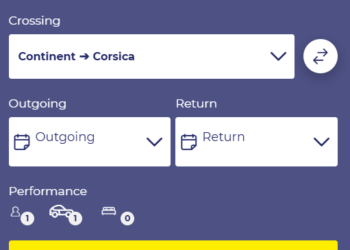What are the 7 travel constraints?
Travelling is one of the most popular things people do in life, and for good reason. It offers a fantastic opportunity to see new and interesting places, meet new people, and learn about different cultures. However, travelling can also be incredibly expensive, time-consuming, and stressful. In this article, we’re going to take a look at the seven most common travel constraints and how you can overcome them.
Money
One of the main reasons people choose to travel is to explore new places and experience new cultures. However, it can be difficult to do this if you are limited by your finances.
Some of the key travel constraints that people face are money and time. For example, many people cannot afford to take long vacations. They may only be able to travel for a short period of time each year, or they may have to save up money first before they can travel.
Another constraint that people face is time. Many people cannot take time off from work to go on vacation. They may have to fit their vacation into their busy schedules, or they may have to take several weeks off work in order to travel.
Both money and time constraints can be difficult to overcome. However, by using some creative planning, people can still travel and experience new things.
Time
One of the most important factors when deciding where to travel is how much time you want to spend traveling. Tesla cars are designed to make traveling as easy and enjoyable as possible.
Tesla cars have a range of over 300 miles, which means that you can go anywhere in the United States without needing to worry about a rental car. You can also use the Tesla car service to take you to any destination in Europe or Asia.
Another important constraint when it comes to travel is the time of year. Tesla cars are available year-round, which means that you can travel at any time of the year. This includes trips during winter months, when other vehicles are prohibited from driving on many roads due to snow and ice.
Space
One of the biggest constraints on travel is space. In order to accommodate passengers and their luggage, most airliners are limited to a maximum weight of around 250 pounds. This limit is usually exceeded by large people and bulky luggage.
Similarly, cars have a limited amount of space inside them. The average car can seat only about 5 people, which is usually not enough for a family. Many families opt for minivans or SUVs instead, which can accommodate up to eight passengers.
However, there are some cars that can fit more than eight people. Tesla Cars can fit up to 10 people inside them, and some luxury buses can hold up to 30 people. These cars are usually reserved for special occasions or long trips, since they are not typically used for everyday transportation.
Health
One of the main reasons people travel is to see new places and experience new cultures. However, some people may find travel constraints challenging.
For example, people with disabilities may find it difficult to travel because they may need assistance to get around. People with chronic illnesses may also have a difficult time traveling because of the health constraints imposed by their conditions.
People who are elderly often have trouble moving around because of age-related health problems. In addition, some people may have difficulty traveling due to financial constraints. For example, they may not be able to afford the cost of airfare or hotels.
Travel constraints can also be logistical in nature. For example, some people may be restricted by the time of year they are able to travel or the time of day they are able to travel.
Accommodation
When planning a trip, one of the most important considerations is where to stay. There are many different places to stay all around the world, each with its own unique features and constraints.
One of the most common travel constraints is accommodation. Most people need to find somewhere to sleep while they are on their trip. This can be difficult if you’re looking for something affordable and convenient. Many hotels are expensive, and there are few options that offer good value for money.
Some people prefer to stay in hostels or guesthouses. These are usually cheaper than hotels, but they may not have all the amenities that you’re accustomed to. You may also have to share a room with others, which can be uncomfortable or even unsafe.
If you’re looking for a more luxurious experience, you can try staying in a villa or resort. These places can be expensive, but they often offer excellent value for money. They may also have more comfortable beds and more space than a hotel.
Whatever accommodation you choose, make sure to consider your travel constraints and what will best suit your needs.
Transportation
There are many different factors that affect travel constraints. These constraints can be physical or emotional.
One of the most common physical constraints is transportation. Many people have to travel to work, school, or other places they need to go. Sometimes these places are far away and it is difficult to get there on foot or by public transportation.
Emotional constraints can also affect travel. For example, someone might be afraid to travel because of a danger they know about, like a natural disaster. Or someone might be uncomfortable traveling because of the weather conditions.
Conclusion
Knowing what the seven travel constraints are can help you make better decisions when traveling. Knowing these boundaries will help you plan your trips more strategically, and ensure that you don’t run into any problems along the way. By understanding these limits, you can be sure to have an enjoyable experience wherever you go!















